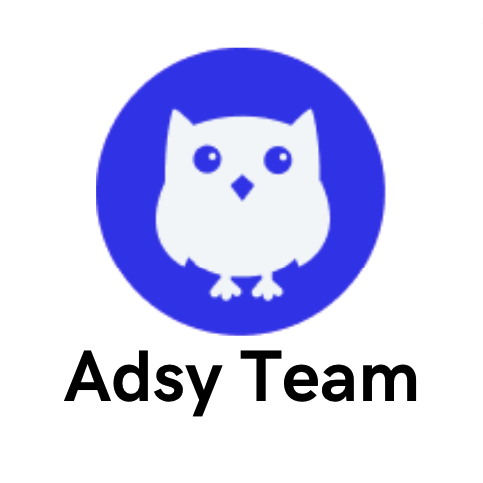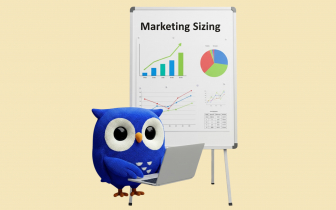Free Sales Enablement Plan Template to Help Your Team Win More Deals

We all know selling is tougher than ever before, and from all signs, it's only going to get worse. So, most likely, without a sales enablement strategy, it's going to be pretty tough to:
- Help your sales team close more deals.
- Ensure that all departments involved are on the same page.
- Give your reps a competitive edge.
Ignoring sales enablement is how you end up with a team that’s out of sync, burning money on too many tools, and still barely recording any tangible results. Talk about a nightmare.
Some try to fix the situation by hiring new sales experts, and maybe it works for a while until it doesn’t. Rinse and repeat.
But here's the thing — you don't need to reinvent the wheel every time you get a new employee or have a new lead. That's just too much hassle and a waste of time.
So, why not use a good sales enablement strategy template to help you start?
Building one can quickly become a chore when you aren’t sure what works and what should be included. If that sounds like you, this guide is for you.
And yes, we have a super detailed template included below (and a shorter checklist as well).
Components of an effective sales enablement strategy template
Any effective framework must include several parts. Each one is just as important as the other, so let’s go through the main ones.
Note: You might want to adjust some of these based on your unique sales process.
1. Goals and KPIs
Imagine getting the best sales experts around, but then you don't have any idea what you want them to achieve. Of course, you want them to sell, and do that as much as they can. But is it really enough of a KPI?
It’s a lot like someone handing you the keys to a car and ordering you to drive. No word on what direction to take or where your destination is. Doesn’t make any sense, right?
That's why clear and measurable objectives are a must. Clear and measurable.
You can set both goals and KPIs based on your experience, niche, expectations, etc. But you can also use one of the frameworks, like SMART or anything else you prefer.
There is no rule, really, so you experiment and see what brings you better results and motivates your team more.
Source: Agency Analytics
A good SMART goal would be something like “Reduce sales cycle length by x% in X months.”
For example, in 2019, Microsoft decided to transition 50% of its customers to cloud services in two years. While not exactly a sales objective, it did result in more subscriptions. At any rate, it serves as a good example of what a SMART goal could look like.
2. Target audience & personas
Before your team can successfully sell to your target audience, it helps a lot if they know how to connect with those people. That’s where a detailed buyer persona and an ideal customer profile (ICP) come in.
Ideally, your buyer persona should go beyond the surface-level information, such as job title or company size. You want to include emotional triggers, specific pain points that your product/service addresses, potential barriers, etc.
The more detailed it is, the easier it will be for your sales team to get a clearer picture of who your ideal buyers are.
As a result, your reps will understand what motivates your customers to buy from you rather than your competitors. You can describe anything there, including the decision-making process, desires, typical objections, etc.
But don’t skip this step, thinking that everyone already knows your clients. This is often a huge misconception. Yes, your team definitely has some assumptions about your target audience, but you need more than that.
This is the only way for them to communicate more effectively and craft better messages that actually work.
3. Objections, bottlenecks, and challenges your sales team faces
For most of us, it takes more than an email or a phone call to make a sale (ha!). And more often than not, when sales teams fail to close deals, it's because they are struggling with one or more of the following:
- Lack of alignment between the marketing and sales teams.
- A sales cycle that is too long (by the standard of your product/service or niche).
- They have no clue how to engage with or personalize to fit the client.
- They face objections that they don’t know how to deal with.
- The competition is too tough, and so many more.
But it would be hard for you to fix these issues if you don’t know what’s causing them in the first place.
That’s what makes sales enablement templates so good. They create a structure for identifying and assessing most challenges that arise. Whatever the problem, your template should have clear steps for how to tackle each one.
And every time you find a new issue, you have to update your framework. At least, this is how it should work in the ideal world.
4. Needs for each funnel stage
If you fail to map out what your customers need at each funnel stage, many prospects will fall through the cracks, and you'll be losing them in between stages. You know that by now.
That’s exactly why content alignment is crucial.
Since each stage requires different types of messaging and support, you first want to take the time to do your research and then add all your insights to the sales enablement plan template.
Awareness stage
For example, customers in the Awareness stage are still just learning that they have a problem and they need basic information. That means that you can do several things at this point:
- You can write educational content in different formats based on your research of the main pain points and desired outcomes.
- Plus, if you have the budget, you can create free diagnostic tools that can help prospects properly pinpoint their challenges.
- You might even invest in content placement on high-traffic, reputable sites to improve brand awareness and attract prospects (i.e., let them know you exist).
Obviously, at this stage, you don’t need to come across as pushy or use aggressive sales tactics.
Consideration stage
The next step in the funnel is Consideration. Of course, not every client will go through every stage, but this is a general framework.
The Consideration stage is when the prospects have gathered some information from several sources and are trying to make up their mind to pick one vendor.
That’s why here, you’ll need content designed to get them on your side. Basically, this includes anything that can help your leads understand why choosing your business is the best decision they can make. You can work with the following pieces:
- Case studies that showcase how well you did with similar businesses,
- Comprehensive product information that shows that you can solve their problems,
- Comparison content, showing how you stand out, etc.
Besides, this is where your sales team needs to be able to handle any type of technical question about the product/service. That covers everything from implementation, long-term value, and the support needed to keep it running smoothly for a long time.
Decision stage
For the Decision stage, you will want to sustain the momentum since you’ve managed to get to their final options. To persuade your prospects here, you would want to give them:
- Personalized proposals that clearly show them how the workflow will be,
- Any free trials, versions, or demos to see how your solution works in practice,
- Money-back guarantees, strong social proofs, etc.
Now, you may be wondering what this has to do with the template?
Well, your framework should provide clear steps on how your sales rep can manage complex decision-making processes at any moment.
In fact, for each of the stages mentioned, you have to ensure that your templates highlight the right content and resources for your sales team. This will make your sales process smoother and potentially even shorten the sales cycle.
5. Onboarding, training, and coaching
Launching and growing a business is fun and cool only on YouTube and Instagram. But in reality, it’s hard, painfully hard. And on top of that, it takes lots of time to actually make it work and scale.
So, every effective sales enablement framework needs to clearly spell out the onboarding process and new hire training.
It’s best if you can go beyond just the basic product coaching. Ideally, you want to provide a detailed roadmap that helps your sales team understand your sales cycle better, initiate and sustain conversations, and handle objections.
If your reps understand your goals and values, it becomes easier for them to sell your products/services.
Your framework should include more than just a training and coaching schedule for new hires. Initial onboarding isn’t enough for long-term success. Instead, you want to keep your team up-to-date with monthly, biannual, or annual coaching sessions.
6. Tools
The right tools can make a world of difference for your sales team. Is this a lame thing to say? Well, maybe. But it’s still true.
We all need useful software. But do you know what often happens in many companies? People don’t really know how to use the tech stack to its full potential.
So, if your management (or you as a business owner) is paying for a great tool, you want your team to make the most out of it.
Typically, in your template, you want to cover:
- Name of the software,
- What it is used for,
- Who is responsible for it (if your team has any questions),
- Any onboarding docs (if you have them) and similar information.
As for the tools themselves, most sales teams will use at least these:
- CRM. This is a customer relationship management system. Think solutions like Salesforce, HubSpot, and anything else that allows you to track leads. This provides the best place to save prospect details, interaction history, and record pipeline management.
Source: Salesforce
Your CRM is only effective when your strategy outlines how your team should use it. This means you need to be clear on the data entry process and your standards. Besides, specify how often they should be updated and how to create a report.
- CMS. Content management systems are equally very important. This is where the proposal templates, case studies, marketing copies, competitive research insights, etc., are stored.
- Communication and collaboration tools. This could be Slack, Google Chat, or any of the other options out there. These are designed to make it easy for everyone on your team to touch base with each other and quickly stay up to date.
- Conversation Intelligence Software. These are tools that record and score your team's calls with customers. They also provide instant feedback to the team members and to the managers. This is how you can identify trends in sales performance as well as in your employees' performance.
- Sales intelligence software. This type of software helps your sales team gather competitive intelligence and insights to understand the market better.
This is one of those things that can help your reps understand what’s trending on the market and what your competition is up to. As a result, they can improve their own strategies.
Some companies go on to add separate analytics software, project management platforms, scheduling tools, and so on.
You want to be careful, though, not to overwhelm your team with too many solutions that only add to their frustration and leave them juggling too many platforms. A survey by Salesforce shows that 70% of sellers complain about this.
So, ideally, if you can, pick tools that integrate well with each other. This will allow your team to access everything simply and spend less time on this.
7. Cross-team alignment
The success of any modern sales effort will depend on how well your teams can collaborate. And this is not just talking about the sales team.
For people to buy from you consistently, usually, there has to be a “dance” between sales, marketing, customer support, and other departments within your company.
The importance of this is often underestimated, but different teams get very different insights from your clients. So, why not use them? Exactly!
That’s why you need to include this in your enablement plan template.
It will also help you avoid many unpleasant scenarios when things just go wrong. For example, your marketing team might create content that does not help the sales process. Or your sales reps might ignore a benefit that your customer success records as one of the major things.
Normally, this doesn’t happen because your team is doing something wrong, not at all. It happens simply because there is no cross-team alignment.
But your sales enablement plan can change that.
When there is clear communication and agreement between all your teams, it leads to quality leads and better sales, product development, and support processes.
Besides, when there is no proper communication, you also won't be able to accurately measure the ROI of your marketing, sales, and potentially other efforts. It will just be hard to get a holistic view of how well your strategy is working, which brings us to our next point.

8. Monitoring and feedback
Without regularly tracking performance and gathering feedback, your business will hardly grow. That's because this is the only way you can know whether your investments are paying off. So, you have to get everything from discrete to continuous data and structure it well.
It’s also the only way to know which areas need improvement and which strategy needs to be tweaked just a little bit more. This is not like this for sales only; it runs across every area of business management.
You want to conduct regular performance reviews for each of the sales reps and at the team level. Did you spot any patterns showing that maybe you need more training programs?
Sometimes, you might find patterns that suggest you need to get more resources or even change your sales template a bit. Don't be discouraged, this is normal. The market is also evolving, so you should be flexible if you want to remain relevant.
Use our free Notion frameworks
Notion is full of all kinds of templates for everything imaginable, especially when it comes to marketing activities. Still, we are adding two more to the pile. These are designed to make it easy for you to follow all the tips we have discussed above.
Think of them as ready-to-use structures that you can tweak to match your own business needs.
Option 1: Checklist
If you want a shorter, simpler version that looks more like a sales enablement checklist, the first option is for you. It will remind you what you need to include in your strategy and let your team quickly go through the main points.
Option 2: In-Depth Template
Yet, if you want a more detailed template where you can attach different docs, share in-depth insights, and create a solid strategy, use our second option.
Here, you’ll find a dedicated page for each section with handy structures that you can scale and adjust.
This includes your ICP template:
Sales blockers and ways to fix them:
A dedicated gallery to list all your content for each funnel stage:
Pages for each funnel stage where you can work on your content and give clear guidance to your sales team:
New hire onboarding and ongoing training frameworks, and tons of other useful pages:
What's more?
Notion is known for being flexible and accessible, so you shouldn't have to worry about trying to master another tool.
You can use this template directly in Notion, or you can just copy and paste it into some other tool like Google Docs if you prefer a different platform. The important thing is to use a format that works for you and is easy to update.
Since this is meant to be something that your team can collaborate on, it's best not to convert it into a PDF since PDFs are static (yeah-yeah, Captain Obvious entered the chat).
6 things to avoid when creating your template
We have looked at what you need to do, but how about what you need to never do? That’s what this section is about. Here are some of the common things to stay away from:
1. Being too abstract
What does this even mean? Well, have you ever gone online to learn how to do something, but the video you found talked about so much theoretical stuff and offered no practical help? Yeah, kind of like that.
So, you want to prioritize practical tips and guidance for everyday sales activities. Even better when it’s tips or steps your team can apply right away.
If possible, add practice scenarios too for specific objections to help your team develop skills in those areas. But the least you can do is include things like “If you face Objection A, do/say Thing B.”
If no one can read and know exactly what to do next, then you need to return to the drawing board because your strategy and template have to be practical.
2. Making it too long
We get it — everyone wants to make sure that their template is very detailed. But the thing is, you also don’t want it to be too long either. Your sales team members are busy people.
And let’s face it — every single day, we’re bombarded with tons of information. So, it’s hard to concentrate on and remember all those lengthy docs.
That’s why it’s best to make your strategy easy to quickly access any relevant insights at any point in time. Often, what you can do is break down each topic into smaller focus sections. This way, you help your people locate specific guidelines in seconds.
In some cases, marketers even offer different versions of key information:
- The detailed and thorough version.
- And the one-page version that the team can easily glance through for useful tips during actual sales conversations.
But that’s all up to you.
3. Not including instructions or examples
You can have the best, most attractive templates, but if no one can use them, then all your effort is wasted. One way to make sure that people can understand and work with what you've put together is by including instructions and examples.
So, beyond adding relevant information, you also want to include practical, step-by-step guides on how that information can be used.
If you have different instructions for different cases, it is best to indicate that as well.
For example, you might have different instructions for preparation, a different set of guidelines for on-call moments, and finally another set for post-conversation analysis. So, you should make sure that you include clear explanations under each step to help bring the concept to life.
In some cases, you can even use real customer scenarios from the past and sales call recordings/transcripts to provide context that will help make your instructions clearer.
4. Using acronyms or vocabulary that isn’t widespread
We get it. Your sales team has its own internal wordies that make perfect sense to them. It's cool. But it might be an issue when you have new team members or people from other departments.
So, it's a bad idea to include any of those in your framework. You want to use clear, everyday language that everyone can understand without having to grab a slang dictionary or ask another person to explain.
If you must use some special acronym or vocabulary, then make sure you also include a brief explanation. This way, everyone is carried along and knows exactly what you mean and what context it applies to.
5. Having no clear structure
All the information in your template needs to be organized so it’s easy to find, especially during busy sales cycles. That means everything should be arranged in a logical structure that matches how your team actually works.
You can break things down into process stages or specific situations that sales team members face every day. This would make it easy for people to find the relevant spot they need.
Besides, you have to make sure that the formatting is consistent. That means clear headings and a structure that follows a logical navigational system.
And it’s also okay to tweak your template after using it. Often, you can feel that you need to restructure it a bit after your team has heavily tested it in their day-to-day.
6. Not getting input from different team members
This is a pretty big one — you really don’t want to create a sales enablement plan in isolation. It’s very important to get insights from everyone at least somewhat related.
This includes everyone from your customer support and customer success teams to marketing and product deps.
You want to understand the real-world challenges your clients have to deal with. This way, you'll make it much easier for your sales reps to do their job well.
Besides, you can pull from the experiences of the more experienced team members to help your new hires.
And your new hires can help you learn exactly what kind of support to provide to improve your onboarding and help new employees become more productive.
Conclusion
So there you have it — everything you need to get started on making your very own sales enablement template. You don’t have to go and create one right away tonight.
Take your time so you can do a great job. It’s okay not to get it perfect the first time, too. You can always change things as you go along.
You can also skip all that hassle by using our template or checklist (or even both).
At any rate, the best thing to do is to focus on the real-world issues your team faces regularly and build your template based on that.








